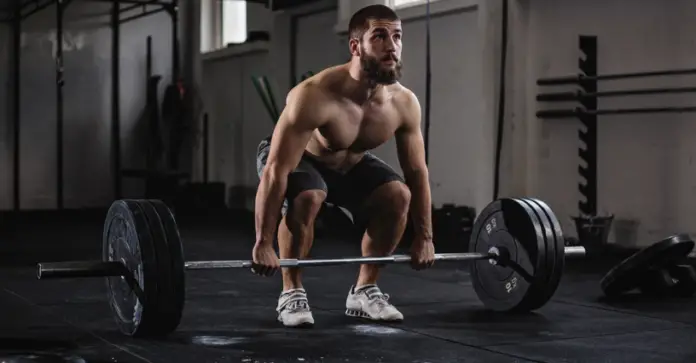Squats – for some, an indispensable part of their training routine, for others, an exercise to be avoided due to the potential for injury.
With the help of our guide, you will learn what types of weight lifting there are and how to do weight lifting properly to take advantage of its many benefits, including improving overall strength or increasing muscle mass.
Squat – what kind of exercise is it?
The deadlift is a compound (multi-joint) exercise that involves the lower and upper body to varying degrees. It consists in lifting a weight in the form of a dumbbell from the floor to the level of the hips and up to a vertical position (back and knees), and then it is lowered to the floor (the classic variant of the pull-up).
Along with the squat and bench press, it is one of the most popular strength exercises . The deadlift is also one of the power triathlon exercises .
Weight lifting is most commonly performed with a barbell, but there are a number of variations of this exercise that allow you to do it with dumbbells, kettlebells, resistance bands, and even a PVC pole, water bottles, or your own body weight (beginner versions).
Squat – which muscles work?
Weight lifting, as a compound exercise, engages several muscles in the body at the same time. Among them are:
- erectorul spinal;
- dorsal mare
- gluteal muscles ;
- biceps femoris and hamstring group ;
- quadriceps of the thigh ;
- the quadriceps muscle ;
- the quadriceps of the lumbar area .
In addition, the postural muscles (the so-called core muscles, i.e. transverse abdominal muscles, pelvic floor muscles, diaphragm, multifidus muscle, internal oblique abdominal muscles) and arms (biceps and triceps work isometrically here) work during the lift. The complexity of this exercise makes it part of training programs for both the lower body (it forms the basis of the so-called leg day) and the upper body (it is incorporated into back training).
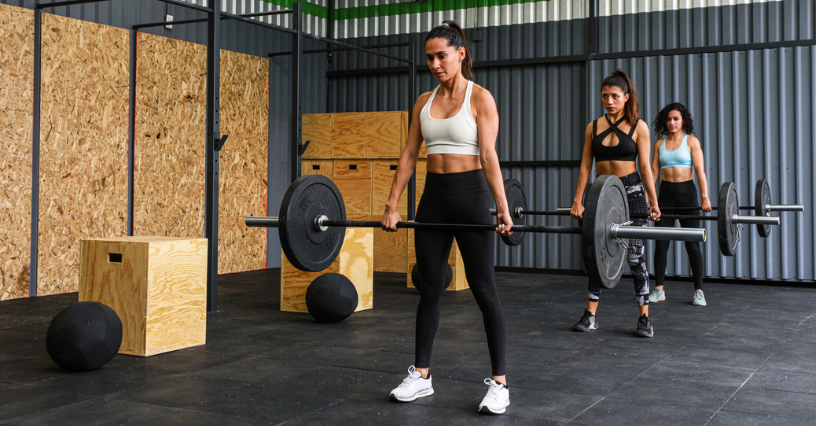
What does the squat offer?
Squats are a great way to strengthen your entire body, increase strength (especially in your legs and back), build muscle mass, improve cardiovascular fitness, gain more flexibility and mobility ( especially in the back and hip joint).
When done regularly, lifting weights is beneficial for endurance, posture and grip strength. It is a good way to shape the buttocks.
It will also help increase bone density and reduce the risk of injury both during sports and during various physical activities carried out daily, such as lifting heavy objects from the ground, etc.
Because lifting weights activates more muscles to work, it allows you to burn a lot of calories and, thanks to the release of key anabolic hormones (testosterone and HGH), it has a beneficial effect not only on muscle strength and growth, but also on the level of energy or libido.
Squatting can prove to be a good alternative for people who, for various reasons, do not feel comfortable doing squats or lunges (painful knees, limited mobility in the ankle joints, etc.).
This exercise puts less stress on the knees and is equally good at engaging similar muscle groups (including the posterior band, ie glutes and hamstrings).
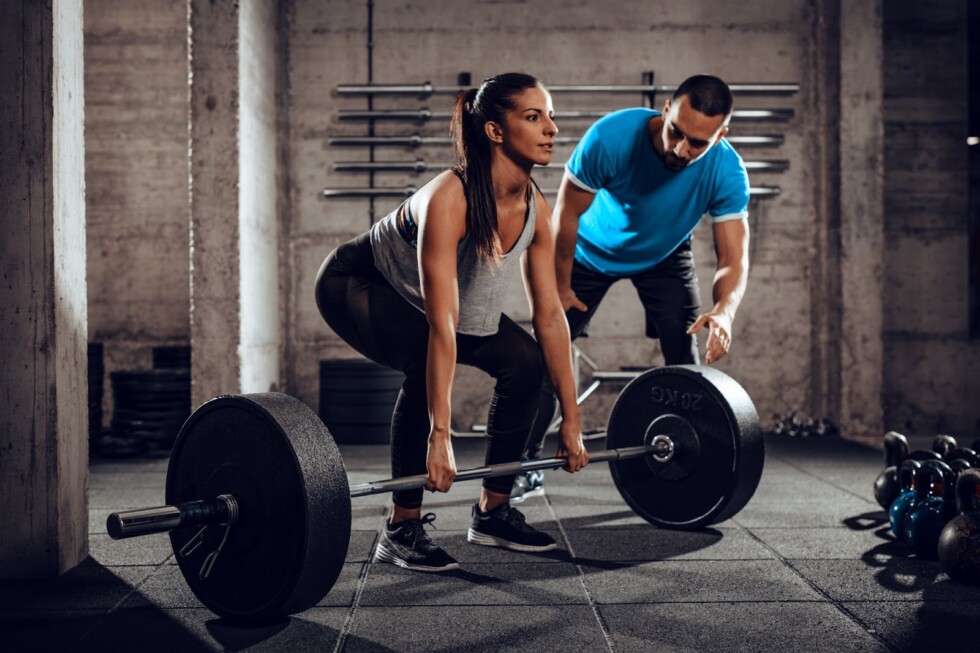
Lifting from a classic bend – the correct technique
The lift from the classical application from an observer’s level appears to be a simple movement of lifting a barbell with as much weight as possible from the floor and dropping it or dropping it again. In practice, you cannot bend down and lift the barbell, as you risk a dangerous injury. The squatting technique is a series of elements – from the starting position, through the swinging movement of the hip (the so-called hip hinge – hip flexion) to the extension of the body, which, when executed correctly, make the movement efficient and safe.
What should a proper deadlift technique look like?
Step 1. Starting position
Stand as close to the bar as possible – place your feet under the bar and hip-width apart (if you’re tall or have wide hips, stand shoulder-width apart).
The bar should touch your shins. Tighten your glutes and abs (point your hip spine toward your navel and your navel toward your spine), pull your shoulder blades toward your spine and down.
The chest should be open, slightly pushed forward. Bending at the hips and slightly at the knees (rotate them outward), lower into a half squat and grab the bar with an overhand grip (or a mixed grip – one hand over, the other under) shoulder-width apart (the bar it must be in a straight line under the shoulders).
Correct your position – your hip should be below the line of the shoulders, but above the line of the knees.
Step 2. Movement
Keeping your back straight, head in spine extension, and gaze straight ahead, inhale, begin to lift your hips up and straighten your legs at the knees while simultaneously pulling the barbell away from the floor.
All the while, guiding it as close to your feet as possible (this will allow you to generate enough force) and avoiding rounding your back, move into a vertical position. Important: Avoid lumbar hyperextension and pushing the hips forward. Hold the move for 1 second.
Step 3. Return
Inhale, begin to bend at the hips and, again guiding the bar close to the body, lower the position until you reach the starting position.
Types of bending pull
Deadlifts can be performed in a number of ways, allowing you to focus on engaging your chosen muscle groups more strongly. Here are some types of deadlifts you should know and implement into your training routine:
- the sumo push-up ;
- rising from the Romanian bow ;
- standing up on one leg ;
- lifting from bending over with dumbbells .
Sumo push-up
In this squat variation, you position your feet wider than your shoulders (toes pointing outwards). The sumo deadlift allows you to use relatively heavy loads (shorter trajectory). This is where the quadriceps, glutes and adductors (inner thighs) work mainly.
Lifting from the Romanian bow
It differs from the lifting from the classical bending in terms of the amplitude of the movement – in the lifting from the Romanian application we do not put the barbell on the floor, but only lower it to the height at which we feel the maximum stretch of the lower band (for some it will be below the knee, for others up to mid-calf). Also, here the knees are only slightly bent. The muscles of the biceps of the thigh and glutes are heavily involved in this exercise. The Romanian deadlift, also known as the straight-legged deadlift , can be performed with a barbell as well as with dumbbells or kettlebells.
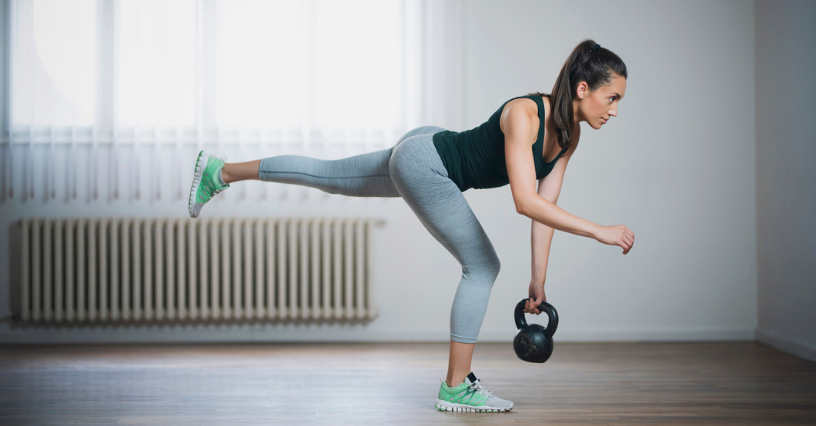
Lifting from bending on one leg
The popular “swallow” is an excellent exercise to build stability and balance, but also to help reduce imbalances between body parts.
This strongly engages the glutes, biceps and deep (core) muscles. It consists of bending the hips so that the trunk is almost parallel to the floor while lifting one leg behind (until a stretch is felt in the posterior band). You can perform the squat in one leg without weight or with a dumbbell/kettle held on the side of the leg you are lifting or with a load held in both hands.
Dumbbell squats
A good alternative to the classic barbell push-up for beginners or those with wrist problems. It allows you to choose an easier task and focus on developing the correct movement technique. Dumbbell squats mainly work the back and leg muscles. Kettlebell weights can be used instead of dumbbells.
Squats for Beginners
If you are new to physical activity or especially strength training, you should also include squats in your training plan. It is important to start by practicing proper technique with no load or using only a PCV bar. At first, you only need to do this exercise 1-2 times a week. You can follow the pattern: 10-15 repetitions in 1-2 sets. Only after you have acquired the correct movement pattern can you start using small loads, such as 1-3 kg dumbbells or a barbell with 1.25-2.5 kg discs on each side.
Is squatting for women?
Yes, the deadlift is an exercise suitable for women. Due to its wide range of variations, it is excellent for shaping the muscles of the buttocks and thighs (here it is worth focusing, for example, on the one-legged lift or the Romanian lift), but also for shaping the back. It’s a great way to increase your strength, speed up your metabolism, get a well-sculpted physique or boost your confidence.
Is the belt necessary for lifting from bending over?
Abdominal and lower back belts, as well as the wrist straps you see on experienced weightlifters, are accessories that are used primarily as lumbar support and stabilization when lifting very heavy weights
If you are a beginner, you currently do not need such equipment. You may want to consider this after you’ve developed proper deadlift technique and want to increase comfort and safety when working with increasing weights.
If you are looking for a high-quality bodybuilding belt or lifting belt , take a look at Sportano.ro and choose the right model for you from the product range of the famous brands: THORN FIT, DIVISION B-2, RDX, Sveltus or Pure2Improve .
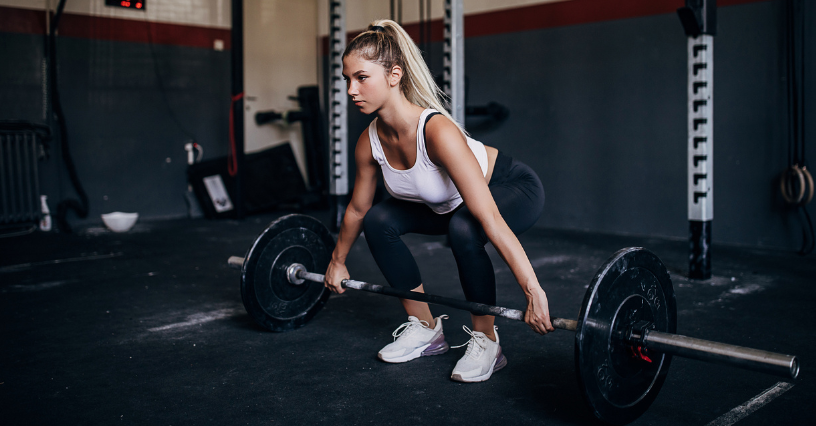
Is squatting safe?
Yes, squatting is safe as long as it is performed technically correctly and the load is selected according to the training level.
An incorrect starting position, the wrong movement technique and too much weight can have a negative impact on the spine (especially the lumbar section), knee or hip joints and can lead to their overload or serious injury.
If you’ve never deadlifted before, it’s a good idea to start by working on proper movement technique and adjusting your loading range under the guidance of a personal trainer. If you have been practicing deadlifts regularly but are not seeing satisfactory results, you can seek guidance from an experienced powerlifter or bodybuilder.


